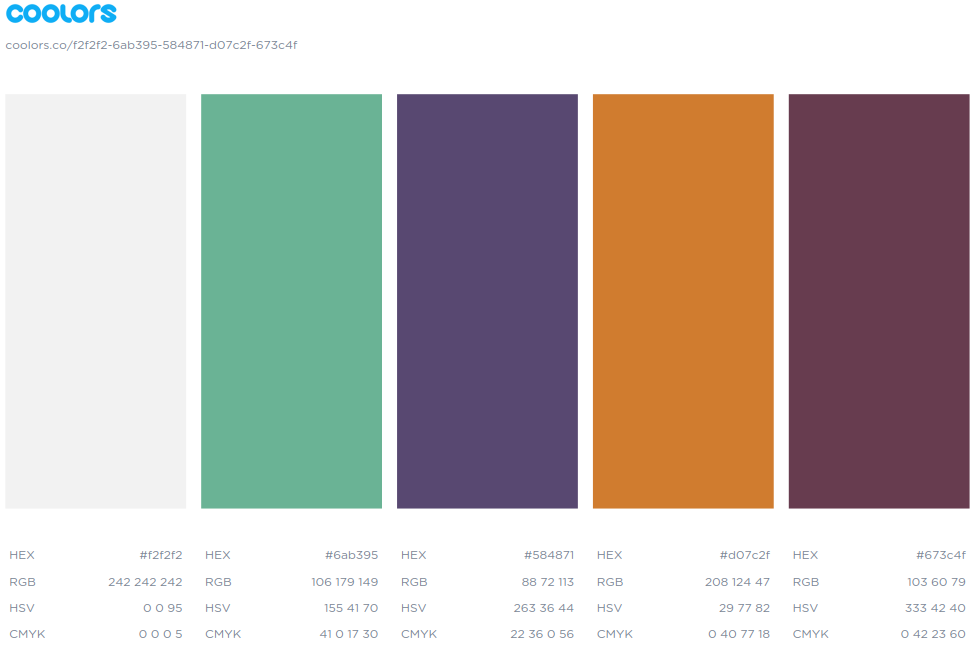This is a running list of free/low-cost products and services available to registered 501(c)(3) nonprofit organizations. We are updating this list continuously.
Do you know about an amazing app or solution that should be on this list? Email the author (below) or send us a message.
Our third-party content policy
Occasionally and at our discretion, OCADSV may include, distribute, offer, or refer to third-party resources/products/services (hereafter referred to as “content”). We include third-party content in OCADSV web properties and other resources for informational purposes only. If we include any third-party content in OCADSV print materials or web resources, that inclusion does not constitute an endorsement of said content, its creators, or distributors by the Oregon Coalition Against Domestic and Sexual Violence or any of our members. In general, OCADSV does not receive compensation in exchange for sharing third-party content. In the event that we do receive compensation (e.g. a third-party organization sponsors an OCADSV event, so we post a thank you message on the www.ocadsv.org website), a clear written explanation will be provided adjacent to the relevant content.
OCADSV staff evaluates all third-party content for factual accuracy, relevance and value to our constituent communities, and reputability of the author/source/vendor. OCADSV reserves the right to remove any third-party content from our web properties or print materials at any time, for any reason. Content creators who would like us to consider adding materials to this website may connect with us using our contact form.
Resources and materials from third parties have separate and independent privacy policies. We therefore have no responsibility or liability for the content and activities of third parties. Nonetheless, we seek to protect the integrity of our resources and welcome any feedback about any third-party content we include, distribute, offer, or refer to by using our contact form.
 Graphic design
Graphic design
Software applications
- Canva (FREE, 100% nonprofit discount for some premium features) is a powerful, yet easy-to-use online graphic design app. Most features are already available for free to the general public, but registered nonprofit organizations can apply for free-in-perpetuity access to Canva for Work (additional templates, tutorials, allows you to share branding packages with your team, etc).
- Paint.NET (FREE; Windows only) is FREE photo editing software loosely based upon the venerable Microsoft Paint, but with far greater capabilities.
- Adobe Creative Cloud (paid subscription required) is a suite of highly complex and expensive applications that includes professional-grade graphic design, photo editing, video editing, and various multimedia creation capabilities. If your organization has the knowledge and necessity for the Adobe Creative Cloud suite, TechSoup offers discounted annual subscriptions for Adobe products.
- Coolors.co is a simple, free online tool that creates beautiful, coordinated color palettes. Establishing a consistent, professional-looking color scheme for your program’s website and print materials is an important part of your program’s branding package and marketing strategy. Just upload your organization’s logo to Coolors, select two colors, and it will give you three more colors that all complement each other. Check out the OCADSV color scheme, which I created using Coolors:

Stock photo libraries
Royalty-free
FREE is great! However, image quality varies and selection may be limited. Also, free stock photo repositories are often lacking in diverse and inclusive representations of people from marginalized communities (see Diverse and inclusive representation below). With all that said, here are my favorite royalty-free stock photo libraries.
Paid (subscription or pay-per-image)
Here are some “traditional” paid stock photo providers. All of these sites either charge money per photo, or offer paid subscriptions to access their photo libraries.
Diverse and inclusive representation
Mainstream stock photo libraries often lack diverse representations of people, particularly around race, sexual orientation, body image, and gender identity and expression. This disparity is even more pronounced on royalty-free stock photo repositories. This is not merely an issue of optics or identity politics; it is imperative that our movement reflects our values and communities. Moving toward equity, accessibility, and inclusion must be an ongoing process baked into every aspect of what we do. An easy, tangible action we can take is to depict inclusive representations in our public-facing materials and resources.
Thankfully, many independent content creators (and even commercial stock photography vendors) are focused on creating and distributing more inclusive stock photography. Most of these initiatives and libraries cost money to access, but I believe budgeting for this is worthwhile and absolutely essential. Additionally, creators should be paid for their hard work. I’ve listed several stock photo libraries focused on diversity and inclusion below:
…and here are some other lists of similar resources:
- Lifehacker: Where to Find More Diverse Stock Photos
- HuffPost: Where to Find Racially Diverse Stock Photography
- Lyrical Host: 24 Websites To Download Culturally Diverse Stock Photos
Clip art and icon libraries
- Flaticon (FREE, some features require a paid subscription) is a massive library of vector icons and small graphics, organized by subject and style. Many of their collections are free to use (with attribution). Most of the icons and graphics on this website (including on this page!) are from Flaticon.
- Iconshock (FREE, some features require a paid subscription) is a large icon and clip art library. They offer a significant degree of customization and styles. Great for building user interfaces!
Fonts and typography
Bring your website and printed materials into the 21st century with some fresh fonts.
PSA: Times New Roman be gone! Banish Comic Sans!!
- Google Fonts (FREE) is an online service that catalogs and serves up a large variety of free fonts. Designers can download font files to install on their computer and use in their projects, and web developers can pull fonts directly from Google’s servers for use in their websites and apps. Lato, the font family used on this website, is provided for free by Google Fonts.
 Software for computers
Software for computers
- TechSoup (prices vary) is a massive catalog of software and hardware solutions, specially discounted for nonprofit organizations. They offer the Adobe Creative Cloud Suite, Microsoft Office, QuickBooks Pro, Windows operating system upgrades, and much more.
NOTE: Buying software applications through TechSoup is almost always cheaper than buying elsewhere online or at a brick-and-mortar retail store.
 Hardware and tech equipment
Hardware and tech equipment
Computer workstations, laptops, network equipment, etc.
- TechSoup offers refurbished desktop workstations, laptops, and other office technology hardware for purchase.
BE AWARE: TechSoup’s hardware selection is not always the most affordable or up-to-date. Read up on the hardware specs for the equipment you need and comparison-shop first. - Dell Outlet offers open-box and refurbished desktop workstations, laptops, and other office technology hardware.
PSA: Do not just buy the cheapest computer available.
 Social media management
Social media management
- Buffer (FREE for basic functionality, some features require paid subscription; nonprofit discount available) is an easy-to-use app that allows you to schedule posts and check analytics for all your social accounts in one place, rather than going to three different networks.
 Websites
Websites
Understanding the many components of a modern website can be daunting to the layperson. I’ve done my best to explain the important parts in the list of terms and definitions below (using the rough analogy of website ≈ automobile as a framework). If you get lost or have questions, I’m available to support OCADSV member programs on these and other topics (my contact information is at the bottom of this page).
Basic website terms and definitions
A content management system (CMS) is software installed on a web server that organizes content (text, pictures, videos, etc.) and renders it into an [ideally] coherent and easy-to-navigate website.
Roughly analogous to a car’s transmission.
Examples: WordPress, Drupal, Joomla, MediaWiki.
A domain name is a unique, human-readable identifier associated with your website and email addresses.
Roughly analogous to a license plate number.
Example: The Oregon Coalition Against Domestic and Sexual Violence’s domain name is “ocadsv.org”.
A domain name registrar is a company that manages the reservation and assignment of Internet domain names (almost always for an annual fee). Many domain name registrars are also web hosting providers (see below), offering both services as a package.
Roughly analogous to the DMV.
Examples: GoDaddy, NameCheap.
A website’s theme is a package of files and code that defines the look and feel of a website. Many themes are designed to work specifically with certain content management systems.
Roughly analogous to a car’s paint job and trim package.
Example: Progressive (this website uses a customized version of this theme)
A web hosting provider is a company that offers space on their servers for individuals and groups to store web content and operate websites (usually for a monthly or annual fee). Many web hosting providers are also domain name registrars (see above), offering both services as a package.
Roughly analogous to a parking garage management company.
A web server is a computer (or cluster of computers) operated by a web hosting provider that stores web content and delivers it upon request to site visitors.
Roughly analogous to both a car’s engine and a reserved parking spot in a parking garage.
A website is a group of pages on the World Wide Web, usually containing hyperlinks to each other and made available online by an individual, company, educational institution, government, or organization.
Roughly analogous to a car.
Web hosting providers and domain name registrars
There are thousands upon thousands of web hosting and domain name registrar companies offering services, from internationally-recognized corporations like GoDaddy to local one-person shops serving their neighbor’s websites to the rest of the world. For a nonprofit organization’s website, I strongly recommend selecting a large, well-established web hosting company with a proven track record. From an individual customer service perspective, small locally-owned-and-operated web hosting companies may be enticing, but the web hosting marketplace can be volatile (web hosting providers can and do go out of business, sometimes taking your website with them) and larger companies tend to have better safeguards against bad actors and contingency plans for all manner of potential issues.
I’ve listed a couple web hosting companies below with which I either have personal experience or received recommendations from people I trust. This is not an exhaustive list.
- Dreamhost is a large, reputable web hosting provider offering web hosting, domain name registrar services, email, an easy-to-use website builder called Remixer, and many other neat tools. Dreamhost’s non-profit program offers a 100% discount in perpetuity on basic web hosting for registered 501(c)(3) nonprofit organizations. OCADSV has used Dreamhost for our web properties since 2014 and I use them to host my personal website; we’ve been generally pleased with their performance.
- Bluehost is another longstanding, reputable web hosting provider. They offer a wider variety of technical services, and are a solid choice if you need to build and host more complex web applications. If your web developers need sudo access, a Bluehost dedicated or virtual private server (VPS) may be good options. Editor’s note: If that last sentence was gibberish, don’t worry about it (unless your organization is planning to build a web application from scratch).
- InMotion Hosting specializes in serving clients with more advanced web hosting needs. I haven’t used their services myself but they come highly recommended.
- A2 Hosting
- DigitalOcean
Approaches to website management
PSA: Never use “free” website services for your organization’s website.
- Unscrupulous web hosting providers collecting demographic and browsing history information about your website visitors, then selling this data to spammers and scammers;
- Inferior or nonexistent security protections, backup features, and technical support, which make your website more vulnerable to being hacked or hijacked;
- Not being able to use your own domain name (i.e. you’d be forced to use “myshelter.terriblewebhost.com” for your website instead of “myshelter.org”);
- Rudimentary or nonexistent Search Engine Optimization (SEO) configuration options, making your website less likely to appear in Google search results;
NEW(ish): All-in-one website builders
It’s easier than ever to build a beautiful, functional website. There are a growing number of web platforms that combine domain name registrar, web hosting, and content management into one. Some even offer private email services.
CONTEMPORARY: Content management system (CMS) software
Most websites built in the last decade and virtually all complex websites (i.e. websites with special access control rules, multiple pages with customized layouts, interactive elements) are organized and run by content management system software (see definition above) that is installed on a web server managed by a web hosting provider. There are scores of website CMS software platforms available (many at no cost), and the process of selecting a CMS is well beyond the scope of this article. With that said, I generally recommend these four of the most popular (and well-supported) CMS’s (CMSes? CMSes-es?):
* Of all the CMS platforms listed above, Drupal has the most extensive feature set and allows for the most customization. It is also time-consuming to set up, requires ongoing care and maintenance, and can be somewhat difficult to learn. Additionally, to make a truly worthwhile Drupal website, you’ll want to hire a web designer/developer (or purchase a professionally-made theme package and customize it yourself, if you’re feeling adventurous).
TRADITIONAL: Raw HTML/CSS/Javascript files
Some websites are still built using raw text files or desktop website publishing software like Adobe Dreamweaver. A highly-skilled web developer can build a bespoke website with much of the same functionality and aesthetic appeal as as websites built around a CMS or in an all-in-one website builder platform. However, websites built this way are among the most difficult to update and maintain, requiring a skilled web developer (or a brave soul with time to spare and a penchant for tinkering) to keep the website’s content fresh and features operating properly.
Email marketing and mailing list management
The number of email marketing apps on the market have steadily grown in recent years, each with various capabilities, advantages, and limitations. A comprehensive review and assessment of the best options is beyond the scope of this article, but I’ve listed below the platforms with which I have personal experience.
- Mailchimp (nonprofit discount available) is one of the more popular email marketing platforms, and is what we currently use at OCADSV to push out newsletters, training announcements, and action alert emails. Although many of its built-in features are geared toward web-based retailers, it is quite capable of handling nonprofit fundraising and awareness-raising campaigns. I absolutely love how easy it is to manage audience segments and customize email templates without having to touch a single line of HTML or CSS code.
- Emma has a feature set a bit better geared toward nonprofits. When set up just right, Emma allows for an extensive range of customizations; some of the most visually appealing emails I’ve ever seen have been created with Emma. However, customizing email templates to perfection often requires hiring a dedicated Emma graphic designer ($$$). I’ve also found the user interface to be fiddly and counter-intuitive.
Last updated: Monday, February 20th 2023